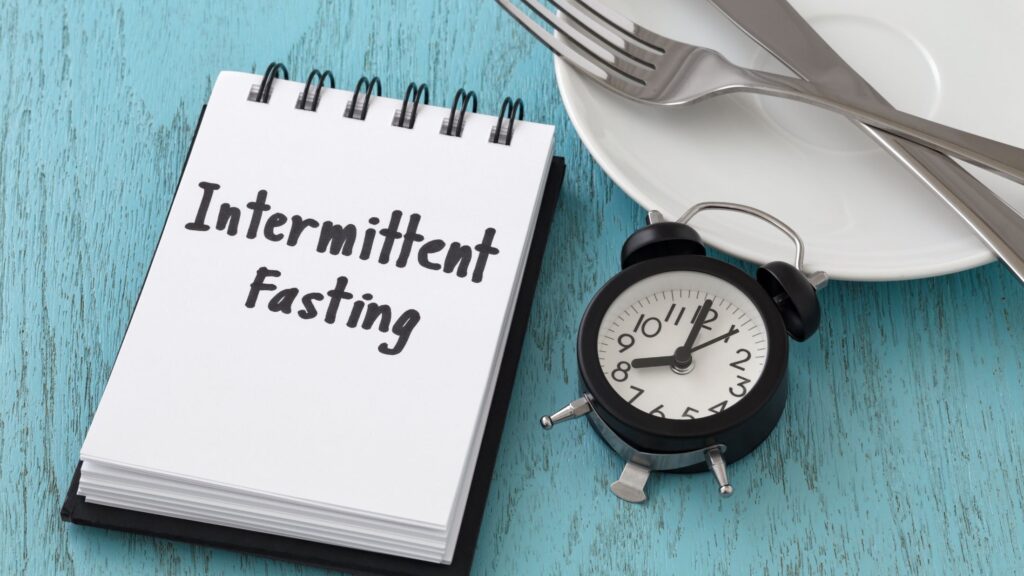Fasting has been observed for centuries for religious and spiritual reasons. Today, intermittent fasting has become a trend. It gained popularity as a way to improve health and well-being.
What Is Intermittent Fasting?

Fasting is the practice of abstaining from all or some food or drink for a certain period of time. It means you stop eating or drinking partially or completely for a specified duration. For centuries, fasting has been practiced across various cultures. People choose to fast for a number of reasons. It could be for religious observance, spiritual discipline, weight loss, or health benefits. Fasting for dietary reasons is often referred to as intermittent fasting.
What Are Different Methods of Fasting?

The definition of fasting is straightforward. It implies switching between eating and non-eating periods on a regular schedule. However, the practices of how people fast can vary widely. The duration of fasting periods varies significantly from few hours to several days. Eating may be restricted or completely prohibited. During fasting time, people can be allowed or not to drink. To make things clearer, we will present fasting methods here based on when you eat.
Time restricted eating
Time-restricted eating is a form of intermittent fasting where you only eat within a specific daily window. In this model, food intake is restricted to a time window of 8–12 h or less every day. This means you can eat during a window of 8 to 12 hours. The remaining time of the day you should restrict from eating. Some examples of Time Restricted Eating are:
– 16/8 model: You fast during 16 hours. You eat during a window of 8 hours.
– 12/12 model: Fasting and eating periods are the same. You fast for 12 hours and eat during the 12 remaining hours. This model may be simpler to follow.
Alternate day fasting
This form of intermittent fasting involves fasting every other day or on certain days of the week. During this type of fasting, you will typically be starving one day and feasting the next. This means that during the fasting period, you will have to restrict your calories intake. The most common type of alternate day fasting is the 5/2 model. For 2 days (consecutive or not), you have to restrict severely your calories intake. Then, during the 5 other days, you can eat normally.
Modified alternate day fasting
This form of intermittent fasting is similar to alternate day fasting. With this type of fasting, you still have to fast every other day. But fasting days are non-consecutive. During this type of fasting, calories restriction is severe. You are typically allowed to eat around 500 calories. A common type of modified alternate day fasting is the 5/2 model. It means you have to restrict food to 500 calories during 2 non-consecutive days. Then you can eat normally during the 5 other days.
Prolonged fasting
Prolonged fasting is not a type of intermittent fasting. Prolonged fasting involves abstaining from food for a period of time longer than 24 h. The fasting period can be extended to 4 to 7 days.
Dry fasting vs water fasting
Water fasting is all types of fasting where you are allowed to have water during the fasting period. Dry fasting in the other hand involves abstaining from all foods and drinks, including water. Dry fasting is typically done for a large portion of the day, and sometimes up to 24 hours or longer. However, it is not recommended to dry fast for an extended period of time. In fact, our body can survive an average of 3 days only without water. Dry fasting is usually done for a defined number of days before returning to a more sustainable eating style.
If you feel any dizziness, fainting, rapid heart rate, or dark urine during dry fasting, you should interrupt immediately your fast. These are all warning signs that your are putting your body at risk.
What Happens to Your Body When You Fast?

When you fast, your body undergoes a number of physiological changes. In the absence of a dietary intake, it is important to maintain a glucose level at normal range.
During the first hours of fasting, the level of circulating glucose falls. This leads to decreased insulin secretion. To compensate for that, the breakdown of glycogen is activated in the liver and muscles. Glucose is then released into the bloodstream to cover the body’s energy needs. This process is called Glycogenolysis.
At the same time, the liver starts converting stored glycogen into glucose. This process is called Gluconeogenesis. It provides the brain and other tissues with the needed energy.
After several hours of fasting, the liver’s store of glycogen is depleted. As a result, the body begins to breakdown stored fat into fatty acids and glycerol. This process is called lipolysis. Fatty acids become a source of energy by various tissues in the body.
As fasting continues, fatty acids are broken down into ketone bodies. Your body enters a metabolic state called ketosis. Ketone bodies are molecules that can be used as an alternative energy source to glucose.
All these changes help your body to adapt to the absence of food intake. They are essential to maintain blood glucose levels.
What Are Intermittent Fasting Health Benefits?

There are many claims about the health benefits of fasting. Current researches related to fasting show promising results. However larger and longer-term studies are needed to explore further the results. Studies have found correlation between fasting and some health improvements, including:
Weight loss
Fasting has been shown to be effective for weight management. It can increase fat burning and boost metabolism. People who fast have higher weight loss compared to people who do not fast.
Improved insulin sensitivity
In some studies intermittent fasting was linked to improved blood sugar control. It has been shown to decrease insulin resistance. This helps to reduce the risk of developing type 2 diabetes. Fasting can be very beneficial for type 2 diabetes prevention.
Heart health
Studies suggest that fasting may improve cholesterol levels and potentially lower blood pressure. These changes may potentially lower the risk of heart disease.
Enhanced brain function
Fasting may have a positive psychological impact on the brain. It can enhance the emotional state. It may provide a sense of reward, accomplishment, pride, and control. Fasting may also improve cognitive functions and anti-aging abilities of the brain.
Intermittent Fasting for Beginners

Fasting has a significant impact on physiological functions of the body. For people who are new to fasting there are some rules to follow for a safe experience:
1- Make sure you are eligible for fasting: If you have any chronic disease or condition, consult with your physician before trying to fast.
2- Do your research: Look up the different fasting methods and choose the one that suits the most your needs and lifestyle. Avoid extreme forms of fasting and aim for a more sustainable method for lasting results.
3- Prepare your body for fasting: for lasting results, fasting should be part of a healthy balanced diet. Get your body ready by eating nutrient-rich foods. Choose plant-based over animal foods when you can. Avoid ultra-processed foods, soft drinks, caffeinated drinks and alcoholic beverages. Drink water and stay hydrated.
4- Prepare mentally: Fasting can be a mentally challenging experience. Set realistic goals and get prepared for potential side effects like hunger pangs or fatigue. Plan activities to keep yourself occupied during the fasting period.
5- Make small steps: You want to start small and progress gradually. Start by fasting only few hours than extend as you go.
6 – Plan your meals ahead: to make sure your are having nutrient-rich, balanced, easy to digest meals after fasting period.
7- Break the fast cautiously: Don’t overeat immediately after your fast. Start with small, easily digestible meals to ease your digestive system back into regular eating.
8- Listen to your body: If you feel unwell at any time, don’t hesitate to break your fast. Pay attention to what your body feels.
When Not To Fast

Fasting is not suitable for everyone. For people with certain conditions, skipping meals and reducing calories intake can be dangerous. If you have some of the following conditions, you should avoid fasting unless approved by your physician:
- If you have diabetes: people with diabetes should generally avoid fasting. During the fast, a diabetes person is likely to have her blood sugar level drop, causing hypoglycemia. Breaking the fast, can cause a spike in blood sugar level leading to hyperglycemia. Both hypoglycemia and hyperglycemia can increase the risk of complications.
- If you have heart disease: fasting can cause blood pressure fluctuation. This can put heart health at risk.
- If you have a history of eating disorder: Restricting food can be highly triggering. It can exacerbate existing symptoms and potentially increase the risk of relapse.
- If you are pregnant or breastfeeding: fasting can lead to nutrients deficiency. It can cause blood sugar fluctuations, dehydration and reduced milk supply. This can endanger the baby and mother health.
- If you are on any medication: Some medications can interact with fasting. This can potentially affect their effectiveness and increase the risk of side effects. Check with your physician before starting any type of fasting.
- If you are a child or a teenager: Children and teenagers are in critical stage of growth and development. fasting as a diet tool could be psychologically and physiologically dangerous for them.
The bottom line
Intermittent fasting can have positive impact on your health and body. However, it is not a magic bullet. It is a tool that can be used among many to promote overall wellness. Intermittent fasting should be part of a healthy and balanced lifestyle. Current evidence about fasting benefits is encouraging. But more long-term studies are needed to fully understand the impact of various fasting types on our health. Avoid extreme forms of fasting and aim for a more sustainable method for lasting results. Fasting may not be appropriate for everyone. It is important to listen to your body when you are fasting and know when to stop.
Disclaimer
Fasting can be a powerful tool, but it may not be suitable for everyone. It’s important to consider individual health conditions. Consult with a healthcare professional before starting any type of fasting. Prioritize safety and well-being throughout the process.
JustaPlate is a meal tracker app based on the plate method. It available for both iOS and android.
If you are seeking to improve your eating habits, download JustaPlate today. Start your meal tracking journey toward a healthier lifestyle.




Leave a Reply